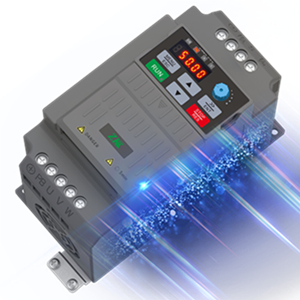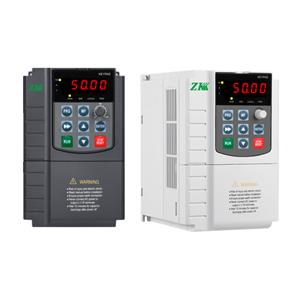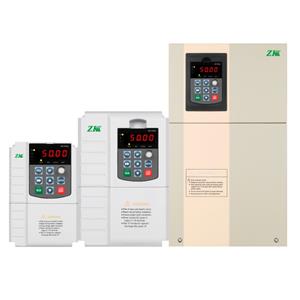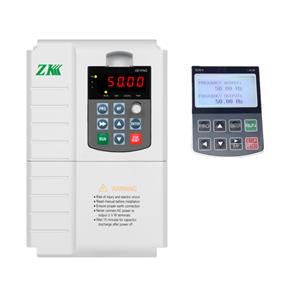The Role of Solar Inverters in Renewable Energy Systems
Solar power water pump inverters are indispensable components of any solar power system. Beyond converting DC to AC, solar power water pump inverters perform critical roles like regulating energy flow, monitoring system performance, and providing advanced functionalities such as communication platforms and grid-support capabilities. Solar power water pump inverters optimize energy output while ensuring reliability and efficiency across residential, commercial, and industrial installations.
The global solar power water pump inverter market is on a growth trajectory, fueled by increasing demand for clean energy solutions to reduce carbon emissions and energy costs. Industry reports project significant market expansion within the next decade, highlighting the importance of strategic investment in solar power water pump inverter projects as the backbone of solar power infrastructure.
Innovative Business Models for Solar Power Water Pump Inverter Projects
To capitalize on the growing demand for solar energy, investors and companies have implemented dynamic business models for solar power water pump inverter projects that reduce financial barriers, enhance scalability, and widen access to clean energy solutions. Key business models for solar power water pump inverter projects include:
1. Direct Purchase Model:
Customers purchase solar power systems, including solar power water pump inverters, outright—a traditional approach that enables homeowners, businesses, and industries to fully own and manage their systems. While the Direct Purchase Model requires higher upfront costs, it yields substantial long-term savings through reduced energy bills and access to incentives like tax credits and government subsidies.
2. Leasing Model:
The Leasing Model eliminates upfront costs for customers by allowing them to install systems with solar power water pump inverters while retaining ownership at the firm or investor level. Customers make monthly payments to use the system, making the Leasing Model particularly attractive for homeowners and small businesses. When leasing agreements incorporate solar power water pump inverter upgrades and replacements, the Leasing Model ensures continuous revenue for businesses and ongoing access to the latest technology for end-users.
3. Power Purchase Agreements (PPAs):
PPAs are contractual arrangements through which customers buy the electricity generated by solar systems installed on their premises rather than owning the systems themselves. Investors cover the installation and maintenance costs of PV panels and solar power water pump inverters, selling power to customers at a fixed rate per kilowatt-hour, often below conventional grid prices. The PPA Model is widely implemented in large-scale solar power water pump inverter projects like schools, hospitals, and industrial facilities.
4. Pay-As-You-Go (PAYG) Model:
Particularly effective in developing countries, the PAYG Model allows customers to adopt solar energy systems incrementally. Equipped with smart solar power water pump inverters, PAYG systems enable users to make small payments over time using mobile platforms. This accessible financing structure facilitates solar energy adoption in resource-constrained communities while enabling companies to recoup investments sustainably.
5. Subscription Model:
The Subscription Model provides comprehensive solutions encompassing installation, maintenance, and energy monitoring. Customers pay a regular fee for access to clean electricity without owning or managing the hardware. Frequent solar power water pump inverter upgrades included in the Subscription Model ensure customers benefit from technological advancements while businesses secure steady, recurring revenue.
6. Hybrid Financing Models:
Hybrid Financing Models combine features of leasing, PPAs, and PAYG systems. For example, investors may offer a solar lease coupled with an option for customers to purchase systems after a defined term. Hybrid Financing Models provide customized solutions to diverse customer needs and market conditions, ensuring applicability across urban, rural, commercial, and industrial segments.
Opportunities and Competitive Advantages
The rise of innovative business models for solar power water pump inverter projects presents compelling advantages for stakeholders:
1. Expanded Adoption:
By lowering financial and logistical barriers, business models for solar power water pump inverter projects democratize access to solar energy across geographies and demographics, driving adoption in developed and developing markets alike.
2. Recurring Revenue Streams:
The Leasing Model, PPA Model, and Subscription Model secure predictable income over the lifespan of each solar power water pump inverter project, ensuring financial stability for companies and investors.
3. Enhanced Technological Integration:
Rapid advancements in solar power water pump inverter technology—including energy storage capabilities and improved grid support—enable businesses to deliver value-added solutions through solar power water pump inverter projects, attracting more customers and diversifying offerings.
4. Market Reach:
Innovative business models for solar power water pump inverter projects allow companies to address varying client profiles, ranging from individual homeowners in urban areas to rural communities lacking reliable grid infrastructure, thereby expanding market reach.
5. Environmental Contributions:
Investments in solar power water pump inverter projects align with global sustainability objectives, offering tangible contributions to reducing greenhouse gas emissions and combating climate change.
Addressing Challenges in Solar Power Water Pump Inverter Projects
While solar power water pump inverter projects promise significant benefits, the sector faces implementation challenges:
· High Upfront Costs:
Financial constraints often impede widespread adoption. Solutions such as tax incentives, government subsidies, green bonds, and crowdfunding platforms can mitigate these barriers for investors and customers in solar power water pump inverter projects.
· Technical Expertise:
The installation and maintenance of solar power water pump inverter projects require specialized skills. Partnerships with local workforce initiatives and vocational training programs can address labor shortages while fostering community involvement.
· Market Awareness:
A lack of knowledge about solar energy is prevalent in certain regions. Educational campaigns, community outreach, and government-sponsored awareness programs can bridge this gap and accelerate adoption of solar power water pump inverter projects.
Solar power water pump inverter projects play an essential role in advancing the global transition to renewable energy. Through innovative business models for solar power water pump inverter projects—including the Direct Purchase Model, Leasing Model, PPA Model, PAYG Model, Subscription Model, and Hybrid Financing Models—investors and companies are removing financial and logistical barriers, making solar energy accessible to broader demographic groups. Concurrently, technological improvements in solar power water pump inverter performance and functionality are fueling market expansion and enhancing the feasibility of solar power water pump inverter projects.
By leveraging these business models, stakeholders can unlock sustainable growth opportunities while contributing to critical environmental goals such as emission reductions and global energy equity. Solar power water pump inverter projects not only represent a profitable investment avenue but also embody a vital step toward achieving a greener, more sustainable future for communities worldwide.




